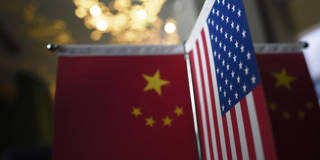While US President Joe Biden’s administration is right to question the basic assumptions that underlay America’s strategy of engagement with China, those who devised that strategy over two decades ago were also right in their own way. Then as now, even distant scenarios must be left open.
CAMBRIDGE – In its new national security strategy, US President Joe Biden’s administration recognizes that Russia and China each present a different kind of challenge. Whereas Russia “poses an immediate threat to the free and open international system … [with] its brutal war of aggression,” China is the only competitor to the US “with both the intent to reshape the international order and, increasingly, the economic, diplomatic, military, and technological power to advance that objective.” The Pentagon thus refers to China as its “pacing challenge.”
Now that Chinese President Xi Jinping has used the 20th Congress of the Communist Party of China (CPC) to consolidate his power and to promote his ideological and nationalist objectives, it is worth reviewing the evolution of America’s China strategy. Some critics see the situation today as proof that Presidents Bill Clinton and George W. Bush were naive to pursue a strategy of engagement, including granting China membership in the World Trade Organization. But while there was certainly excessive optimism about China two decades ago, it wasn’t necessarily naive.
After the Cold War, the US, Japan, and China were the three major powers in East Asia, and elementary realism suggested that the US ought to revive its alliance with Japan, rather than discounting it as an outdated relic of the post-World War II era. Long before China was admitted to the World Trade Organization in 2001, the Clinton administration had reaffirmed the US-Japan alliance, which remains the bedrock of Biden’s strategy.

CAMBRIDGE – In its new national security strategy, US President Joe Biden’s administration recognizes that Russia and China each present a different kind of challenge. Whereas Russia “poses an immediate threat to the free and open international system … [with] its brutal war of aggression,” China is the only competitor to the US “with both the intent to reshape the international order and, increasingly, the economic, diplomatic, military, and technological power to advance that objective.” The Pentagon thus refers to China as its “pacing challenge.”
Now that Chinese President Xi Jinping has used the 20th Congress of the Communist Party of China (CPC) to consolidate his power and to promote his ideological and nationalist objectives, it is worth reviewing the evolution of America’s China strategy. Some critics see the situation today as proof that Presidents Bill Clinton and George W. Bush were naive to pursue a strategy of engagement, including granting China membership in the World Trade Organization. But while there was certainly excessive optimism about China two decades ago, it wasn’t necessarily naive.
After the Cold War, the US, Japan, and China were the three major powers in East Asia, and elementary realism suggested that the US ought to revive its alliance with Japan, rather than discounting it as an outdated relic of the post-World War II era. Long before China was admitted to the World Trade Organization in 2001, the Clinton administration had reaffirmed the US-Japan alliance, which remains the bedrock of Biden’s strategy.